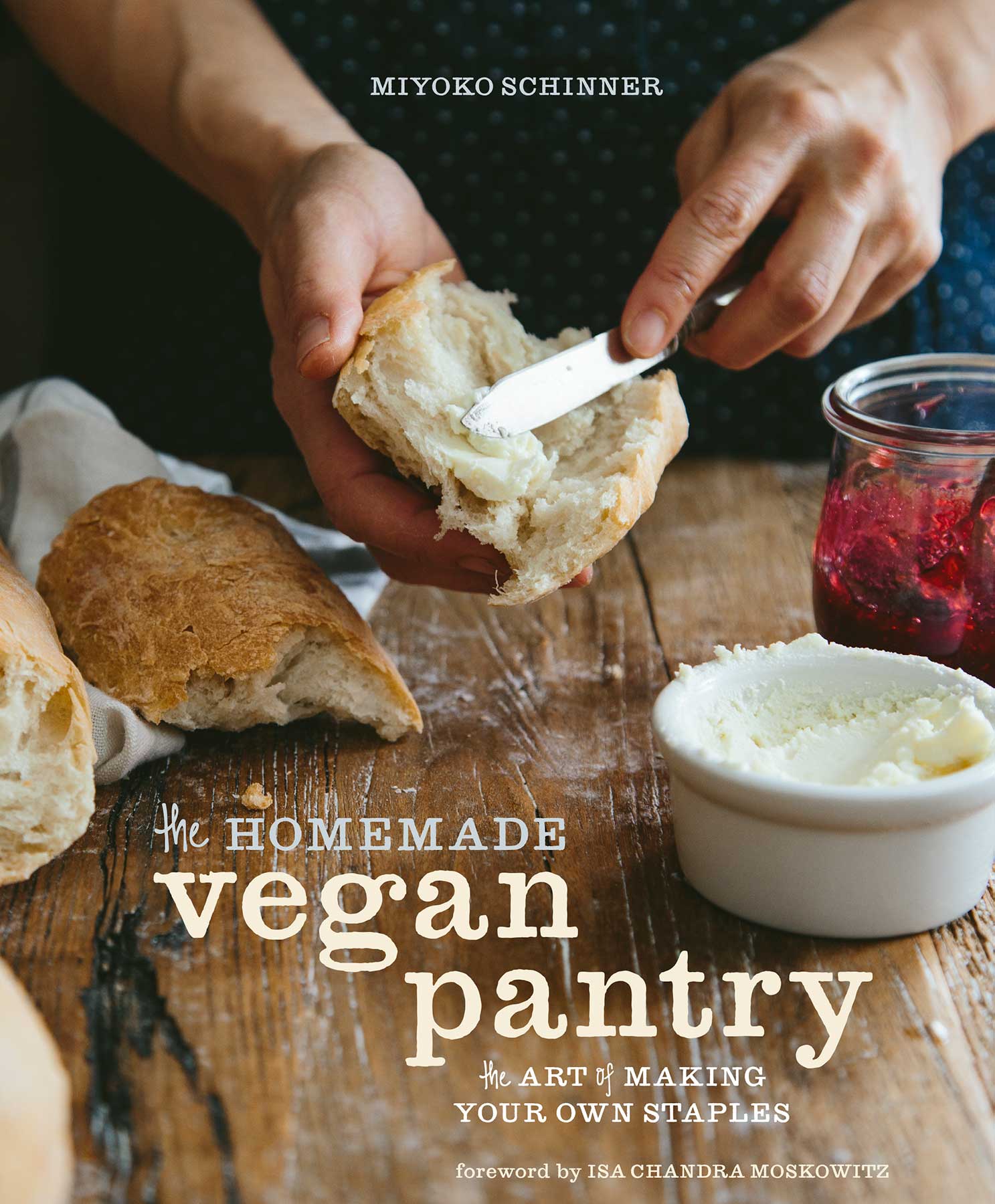
THE HOMEMADE VEGAN PANTRY: The Art of Making Your Own Staples
Miyoko Schinner Eva Kolenko
Ten Speed Press
June 2015
$22.99/hardcover
ISBN: 978-1607746775
Miyoko Schinner Eva Kolenko
Ten Speed Press
June 2015
$22.99/hardcover
ISBN: 978-1607746775
Miyoko Schinner is a vegan chef, author of three cookbooks (Artisan Vegan Cheese, Now and Zen Epicure, and Japanese Cooking), co-host of Vegan Mashup on the Create Channel, and star of her own online show, Miyoko’s Kitchen. She is a regular cooking instructor in the nationally renowned McDougall Program and at major vegan festivals and events around the country. Her vegan cheese company began shipping to natural foods stores in late 2014. Schinner has appeared in numerous publications and on television and radio, including VegNews, Chicago Tribune, LA Weekly, NPR, ABC World News Tonight, San Francisco Chronicle, Washington Post, New York Post, and Eating Well. Find out more at ArtisanVeganLife.com.
Kitchen crafters know the pleasures of making their own staples and specialty foods, whether it’s cultured sour cream or a stellar soup stock. Now vegans who are tired of buying over-processed products can finally join the homemade revolution. This guide to creating staple ingredients from author and television host Miyoko Schinner (dubbed by VegNews as “nothing short of a genius”) includes techniques for making vegan butter, pizza dough, yuba “bacon,” almond milk, and so much more. Studded with full-color photos, THE HOMEMADE VEGAN PANTRY celebrates beautiful, handcrafted foods that don’t take a ton of time.